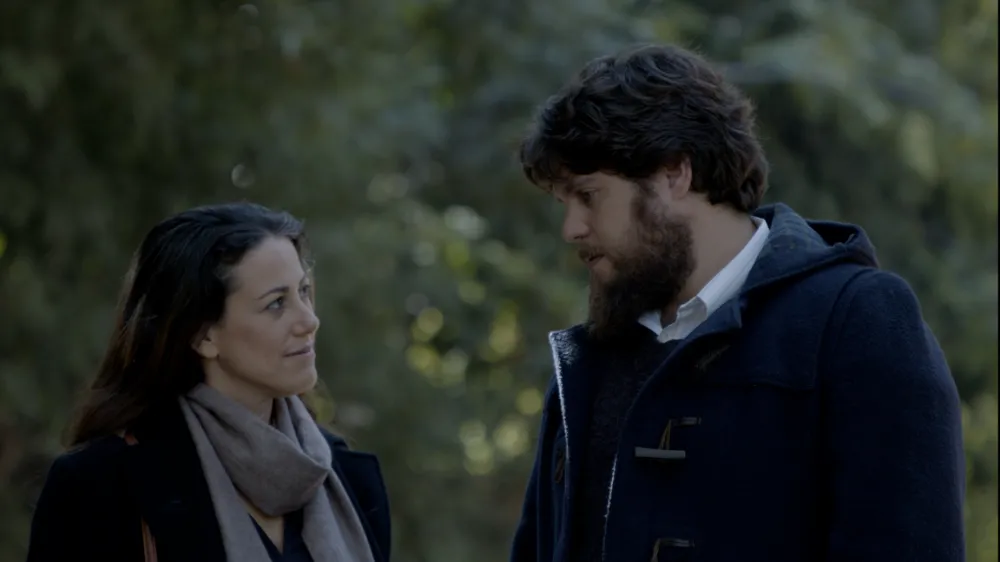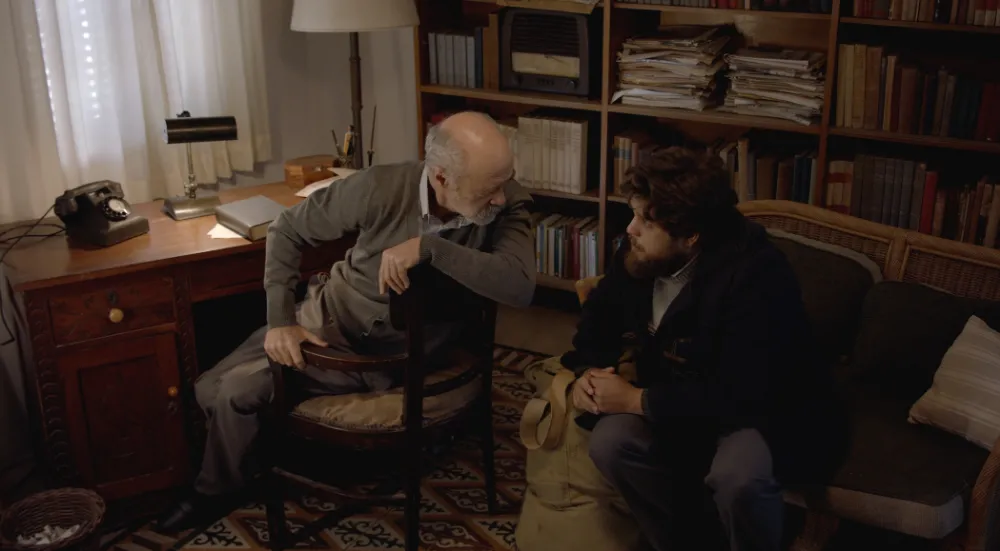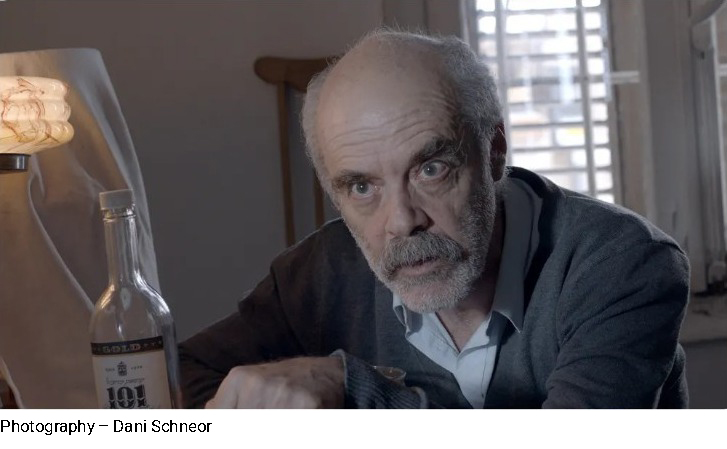By Tami Klein
Posted in art, "מבט על החיים"
Posted in art, perspectives on life
Dan Wolman’s new film is based on the last book written of the late author Amos Oz – called “The Gospel According to Judah” in Hebrew and “Judas” in English – it is a magnificent, new creation. The puzzle that Dan Wolman has assembled is perfect, starting with the format – using the 3×4 frames of yesteryear, appropriate for the setting of the film in Israel, 1959 – including the three-person cast and ending with the setting, all of the action occurs in a single house in Jerusalem. Throughout, restraint prevails in both the visuals and the dialogue.
Actors Doron Tavori, Yuval Livni and Einav Merkel successfully bring their characters to life, using deep tones of expression in their speech and the intensity of their feelings, all tailored to the changes, large and small, that life presents them. Their acting naturally suits their personalities and the complexity of “who they are.”

The modest “how” described above expresses life at that time, and contrasts starkly with the themes the film raises, which break through with unrelenting intensity. Both the major themes and secondary themes are moving, with the “how” and the “what” coming together to make difficult, immense statements that address both universal human issues and specific, local ones.

Ever since the rise of Christianity, even today, Jews and the Christian world have been connected with deep, diverse ties, on innumerable levels, interspersed with unrelenting anti-Semitism. Those who agree, those who accuse and those who live with conflict resonate powerfully in the film.
Courtesy of Interfax
To the issues in the previous paragraph, add the tragic confrontation between Zionism and local Arabs, during the partition of the land when the State was established, the subsequent blood and pain, and endless human suffering. The combination yields a manifesto that erupts in almost every dialogue in the film.
Courtesy of Interfax
The beauty of the film is that, beyond the fundamental themes enumerated above, it addresses everyday emotions and conflicts including aging, illness, loss, the arousal of sensual emotions, love that is extinguished and ignited, sensitivity to others, tenderness, concern and many more aspects of human life.
Courtesy of Interfax
The film depicts tremendous human beauty and peers through complex, endless human suffering.

The contribution of the photographer, Dani Schneor, to the film cannot be overemphasized. Notice the small and large views, the facial features that add to content and understanding to scenes, photographic angles that tell the story of place and time. “Minor,” but actually significant, sensitivity finds expression in Schneor’s contribution.
Courtesy of Interfax
——————————-
Dan Wolman has graciously shared additional information and personal details that add a layer of background to the film:
“Amos Oz, of blessed memory, was a close friend of mine for over 40 years. I loved him, appreciated him and faithfully followed his works. Immediately after reading his book The Gospel According to Judah, I approached him and expressed my desire to produce a film inspired by the book.
“‘Judas’ closes the circle of my collaboration with Amos Oz that opened nearly fifty years ago with the film adaptation of his book My Michael. After watching it, Amos wrote to me: ‘Thank you for taking me painlessly from the verbal world to the visual world.’ I hope with all my heart that if he were to watch the new movie, he would feel that way again. (I also wrote screenplays based on his books The Hill of Evil Counsel and Soumchi but those did not reach the production stage.
“It was very challenging to create a film from a ‘book of ideas’ and translate a thought-provoking intellectual experience, which is also a story about extraordinary characters in a special period of the life of the young country, for cinema. The challenge attracted and excited me; in light of the reviews, I would like to believe that I succeeded.
“My grandfather on my mother’s side was a Christian and my grandmother was Jewish; perhaps this is the that reason the topic of anti-Semitism has always occupied and fascinated me. I touched on it in several of my films (‘The Dreamer,’ ‘Floch’, ‘Hide and Seek,’ ‘It’s About Love’). Amos Oz thought that the presentation of Judas Iscariot in the New Testament was the seed from which anti-Semitism sprouted, leading to the persecution of the Jews, pogroms, inquisitions and the Holocaust. For this reason, I think that it is very important that the film be screened in the wider world, not only at Jewish and Israeli festivals. Happily, the film has already been accepted for the Madrid International Film Festival to be held in September.
“In addition to closing the circle with Amos Oz, which started with ‘My Michael,’ this film also closes a circle with the wonderful actor Doron Tavori, who plays the character of seventy-year-old Gershom Wald. More than forty years ago, as a young actor, Doron was chosen for a central role in my film ‘Hide and Seek.’
“I would like to mention the exceptional collaboration in this film with photographer Dani Schneor, who in 1978 shot the film ‘The National Poet,’ which I created based on a radio sketch by Hanoch Levin. I also owe a big thank you to the late musician Zohar Levy, who composed the music for the documentary film about Jerusalem, ‘Touching the City.’ With his family’s consent, I used his music in this film as well.”
——————————-
Judas | Directed by: Dan Wolman | Production: Dan Wolman and Amir Gedaliah | Screenplay: Shoshi Wolman | Photography: Dani Schneor | Edited by: Eyal Amir |Sound design: Eva Spitkovski | Music: Zohar Levy
Dan Wolman, film director




